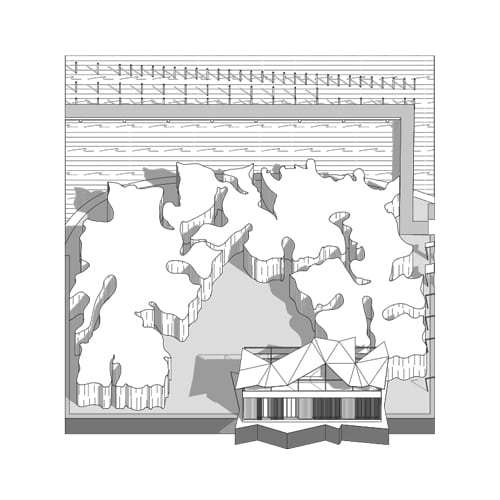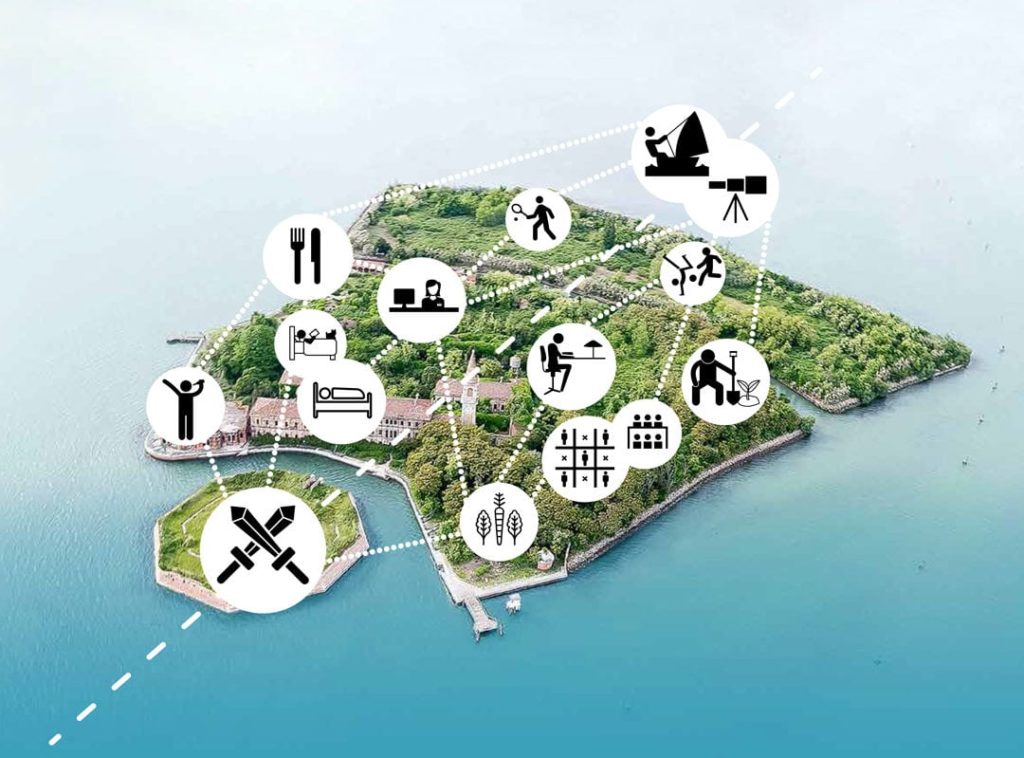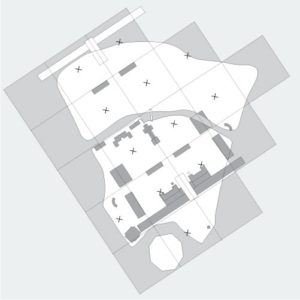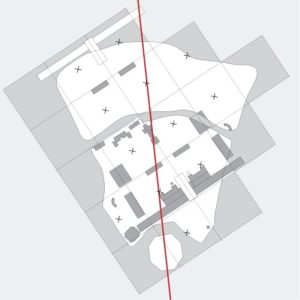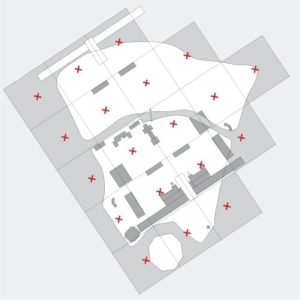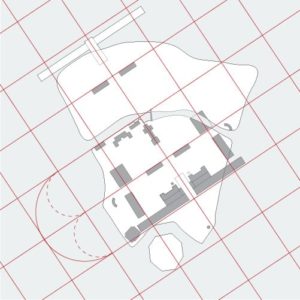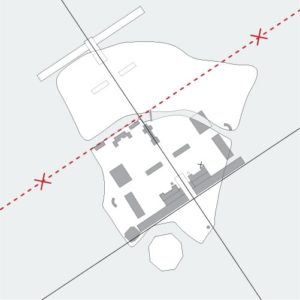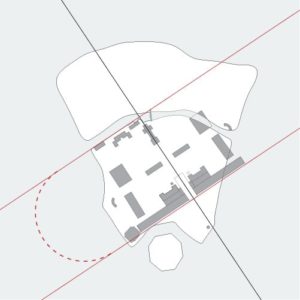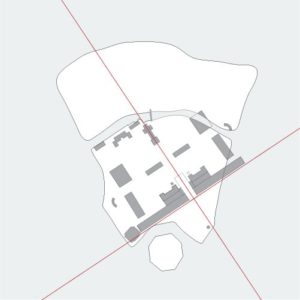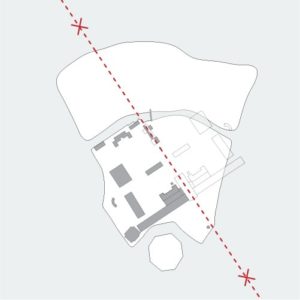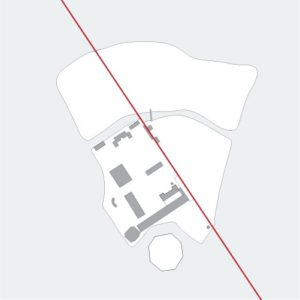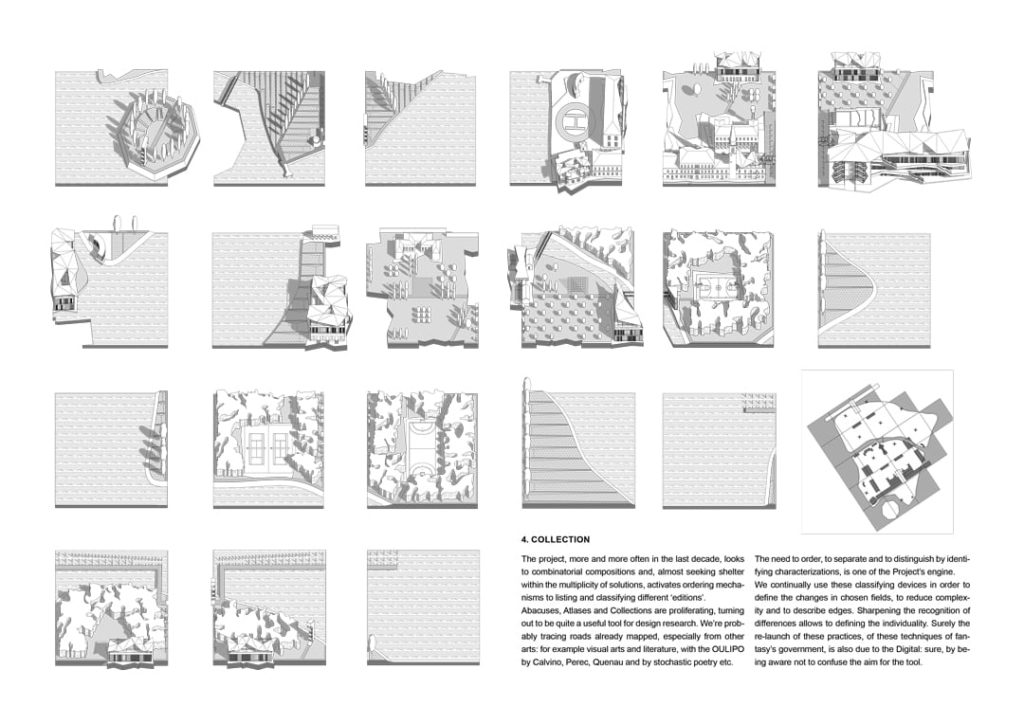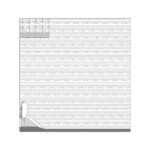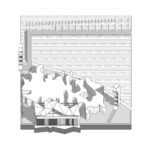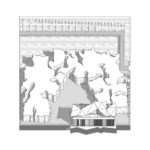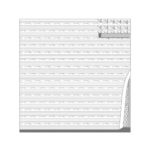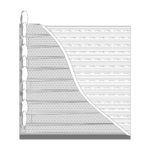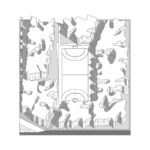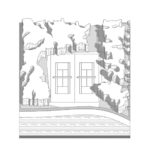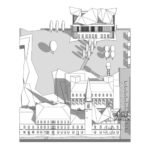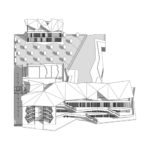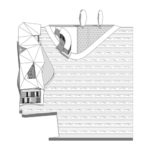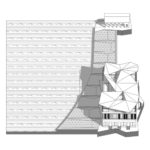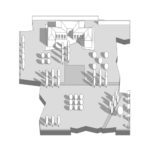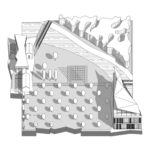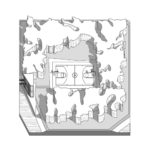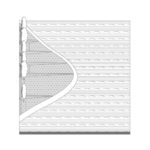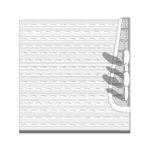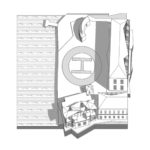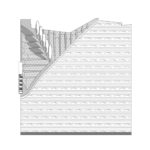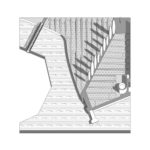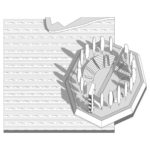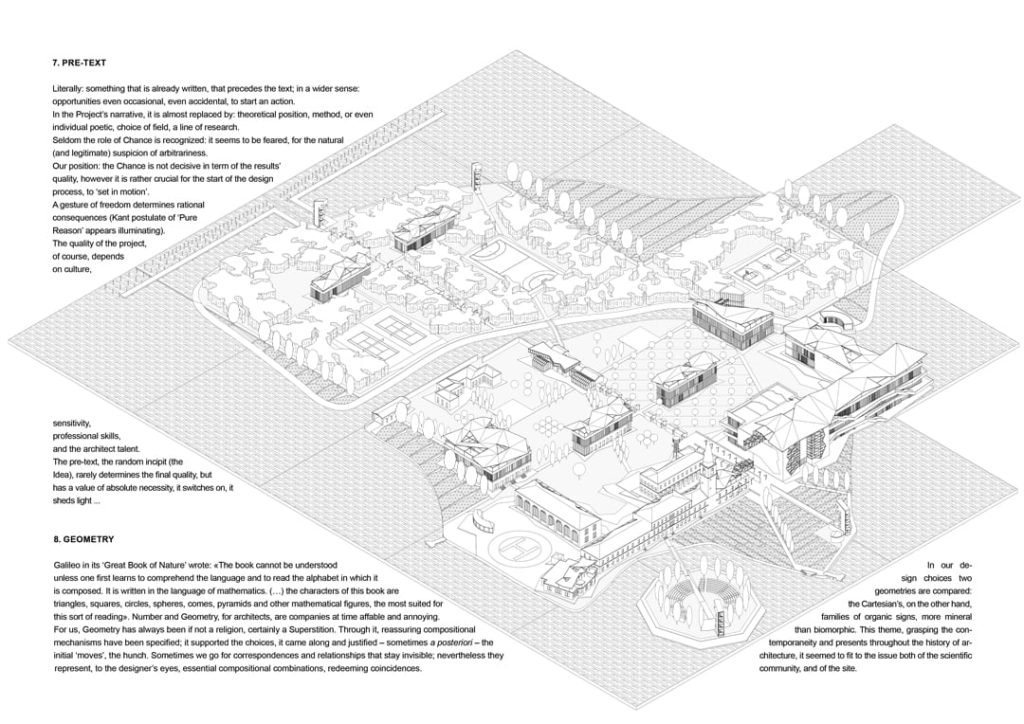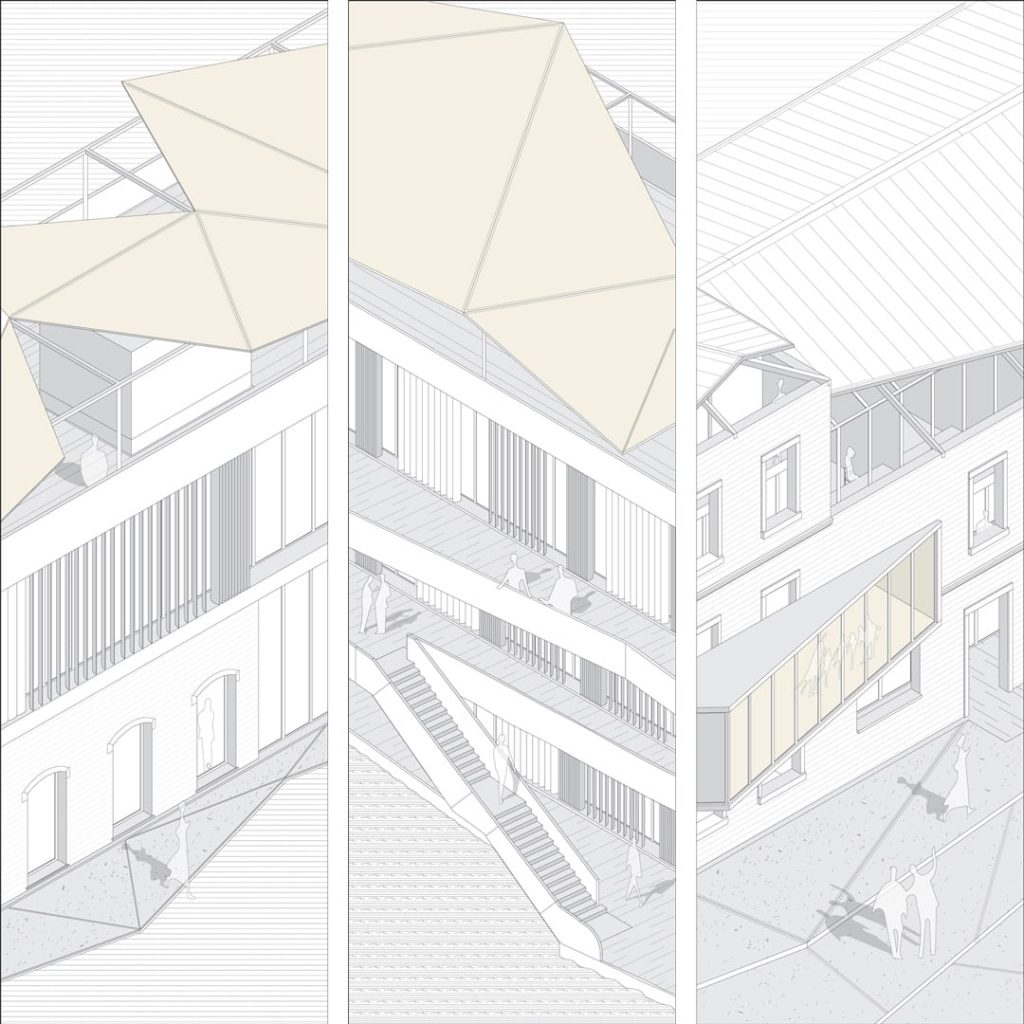1. ANALYSIS
Each Analysis, to rigorous and objective that wants to be, is inexorably a Project act.
Georg Lichtenberg in ‘The Waste Books’ writes: «no one sees the same rainbow».
Nevertheless, patrolling the existing is an essential preliminary: a propitious stage for some, a reassuring ritual for others, certainly a project approach. We have collected evidences, significant fragments and pre-texts, knowing that we can recognize more easily what to some extent it already belongs to us, or what will be able to support our choices more usefully. Choices, which have an irrepressible individual character, albeit linked to the occasion (the topic, the site): they belong to the bio-historical memory of the designer.
In ‘The Magic Hunting’, Valery supports the thesis that somewhere in our mind, there are forms waiting for a meaning.
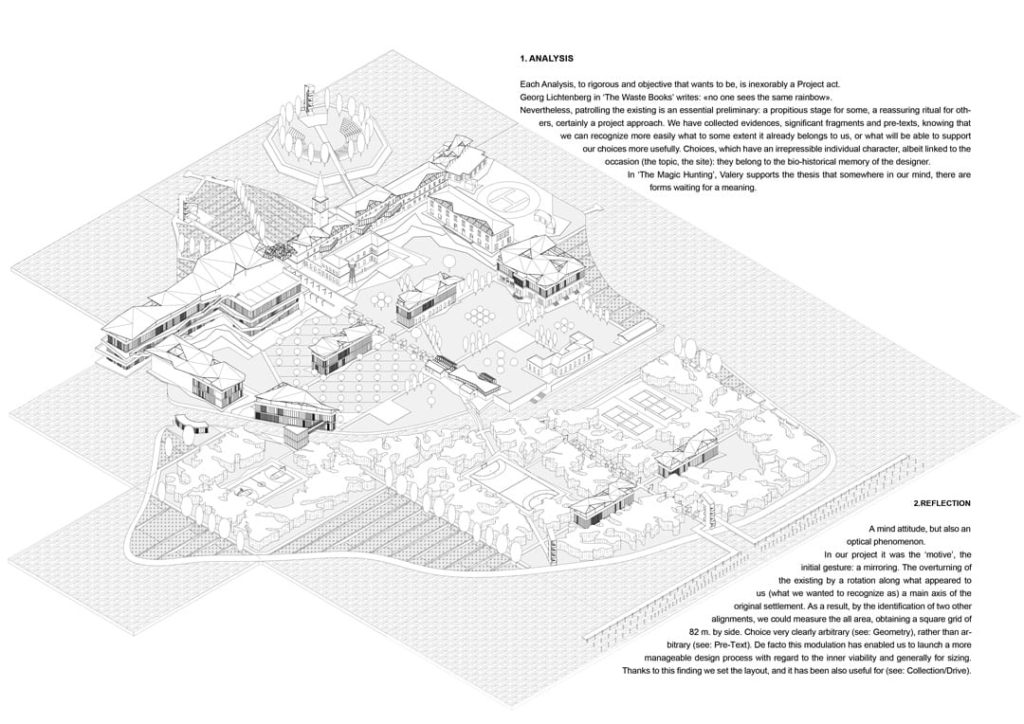
2.REFLECTION
A mind attitude, but also an optical phenomenon.
In our project it was the ‘motive’, the initial gesture: a mirroring. The overturning of the existing by a rotation along what appeared to us (what we wanted to recognize as) a main axis of the original settlement. As a result, by the identification of two other alignments, we could measure the all area, obtaining a square grid of 82 m. by side. Choice very clearly arbitrary (see: Geometry), rather than arbitrary (see: Pre-Text). De facto this modulation has enabled us to launch a more manageable design process with regard to the inner viability and generally for sizing. Thanks to this finding we set the layout, and it has been also useful for (see: Collection/Drive).
3. ENTROPY
Transformation, but also a measure: the measure of the disorder in a physical system. It should be kept under control: the disorder increases the dispersion, the waste and the consumption of resources. A principle that has countless findings: from ethical values, applicable to the dynamics of politics, to individual behaviour, to social and economic systems, etc. For our discipline, beyond the many implications, it has become, within few years, a strategic theme Project.
Few intellectual elites (coming from New Age and hippies movements), also in the sixties, waved vaguely the environmentalism topic; within few decades those same aims became matters for international politics, for business and social movements. Themes which directly affect our discipline too.
Fairly enough, the most aware have never lacked of attention towards the context, the territory, the natural energies and the relationship with the environment.
A project either is sustainable or it is not. Now it seems to have reached an even more decisive role, a performing influence.
We dare to express some reservation, certainly without underestimating the dramatic actuality of the energy sector, rather referring to what seems, in the project field, like a totalizing burst.
Notwithstanding the foregoing, in our proposal this concern finds place, especially by means of two choices: the production of crops which enable integrated food chains, and the roof structures (for the new buildings but also for those existing without) which play the dual role of shading and climate-control on the one hand, and of energy production on the other.
4.COLLECTION
The project, more and more often in the last decade, looks to combinatorial compositions and, almost seeking shelter within the multiplicity of solutions, activates ordering mechanisms to listing and classifying different ‘editions’.
Abacuses, Atlases and Collections are proliferating, turning out to be quite a useful tool for design research. We’re probably tracing roads already mapped, especially from other arts: for example visual arts and literature, with the OULIPO by Calvino, Perec, Quenau and by stochastic poetry etc. The need to order, to separate and to distinguish by identifying characterizations, is one of the Project’s engine.
We continually use these classifying devices in order to define the changes in chosen felds, to reduce complexity and to describe edges. Sharpening the recognition of differences allows to defning the individuality. Surely the re-launch of these practices, of these techniques of fantasy’s government, is also due to the Digital: sure, by being aware not to confuse the aim for the tool.
5. GREEN
After few decades of abandonment, a dense and wild vegetation dominates the island.
It can hardly be nominated Third Landscape because, in this case, it is not about prevailing biodiversity, rather the natural selection of the most aggressive species. And even: the character assumed by this green appears fascinating precisely because of this representation of violent vitalism, indomitable.
In our proposal it is kept as it is, in the small northern island, where there are located sports and free-time facilities and two buildings for gym. The idea is to retain it almost entirely: intervening drastically by limiting the edges with geometric trimmings – depending on the settlements and on the viability – and by periodically levelling the heights, as if it were hedges on a larger scale. There also are planned other types of vegetation (Clement would say First and Second Landscape): vegetable gardens where it is possible to grow fruits and vegetables intended for community consumption, and on the central island, domesticated green, interposed between the buildings, a sort of small urban parks, green areas and corridors, rows, pergolas etc.
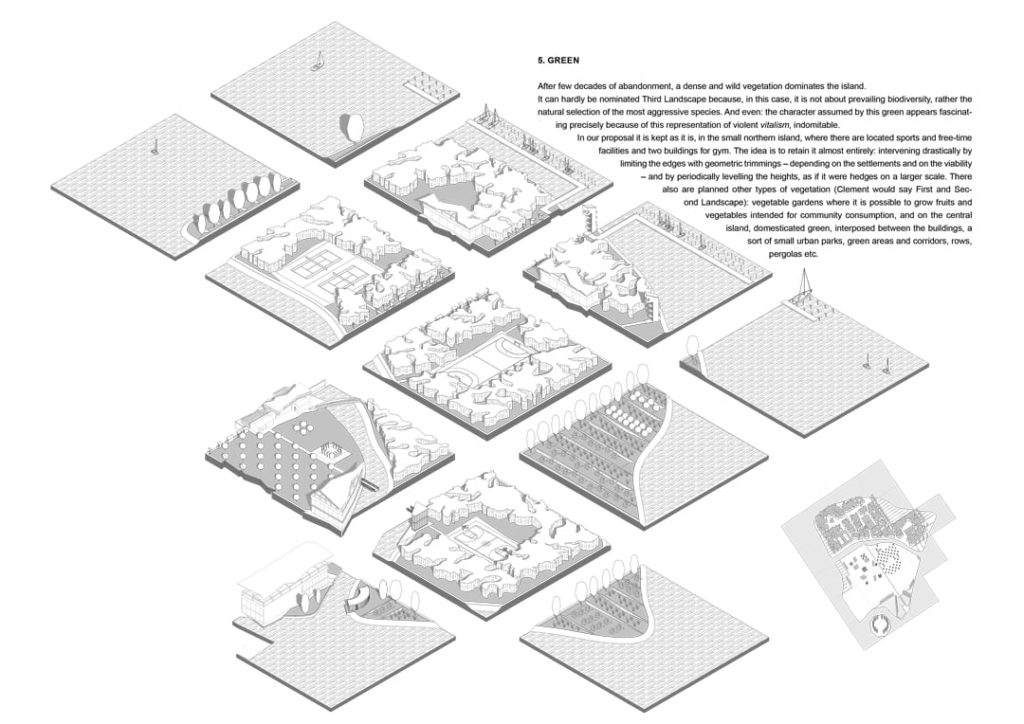
6. AWARENESS
Roberto Bolaño in ‘Los sinsabores del verdadero policía writes: «and he realised something he had always known: the whole is impossible, knowledge is only a way to sort fragments». A place voted to Knowledge (and hopefully where training is also complement to production and consumption) should no longer be unitary and ecumenical; rather it should appear as segmented, fragmented and adaptable as possible.
The competition’s area has already these features: the original diversity of the existing volumes, its geography (Poveglia is 3 little islands), and a wild nature as a result of its abandonment, which further transformed and differentiated the sites. The issue of fragment, of knowledge by parts, of natural dialectic by differences, founds space and opportunities in our project, both in the adopted layout and in the morphological variations.
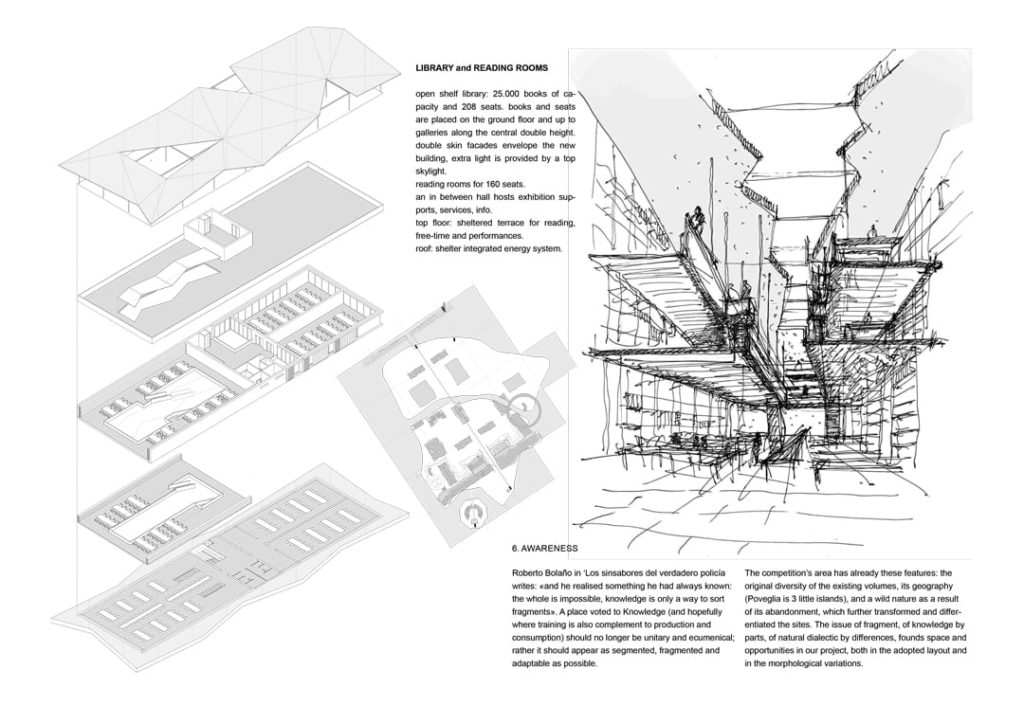
7. PRE-TEXT
Literally: something that is already written, that precedes the text; in a wider sense:
opportunities even occasional, even accidental, to start an action.
In the Project’s narrative, it is almost replaced by: theoretical position, method, or even individual poetic, choice of field, a line of research.
Seldom the role of Chance is recognized: it seems to be feared, for the natural (and legitimate) suspicion of arbitrariness.
Our position: the Chance is not decisive in term of the results’ quality, however it is rather crucial for the start of the design process, to ‘set in motion’.
A gesture of freedom determines rational consequences (Kant postulate of ‘Pure Reason’ appears illuminating). The quality of the project, of course, depends on culture, sensitivity, professional skills,
and the architect talent.
The pre-text, the random incipit (the Idea), rarely determines the final quality, but has a value of absolute necessity, it switches on, it sheds light …
8. GEOMETRY
Galileo in its ‘Great Book of Nature’ wrote: «The book cannot be understood unless one first learns to comprehend the language and to read the alphabet in which it is composed. It is written in the language of mathematics. (…) the characters of this book are triangles, squares, circles, spheres, comes, pyramids and other mathematical figures, the most suited for this sort of reading». Number and Geometry, for architects, are companies at time affable and annoying.
For us, Geometry has always been if not a religion, certainly a Superstition. Through it, reassuring compositional mechanisms have been specified; it supported the choices, it came along and justified – sometimes a posteriori – the initial ‘moves’, the hunch. Sometimes we go for correspondences and relationships that stay invisible; nevertheless they represent, to the designer’s eyes, essential compositional combinations, redeeming coincidences.
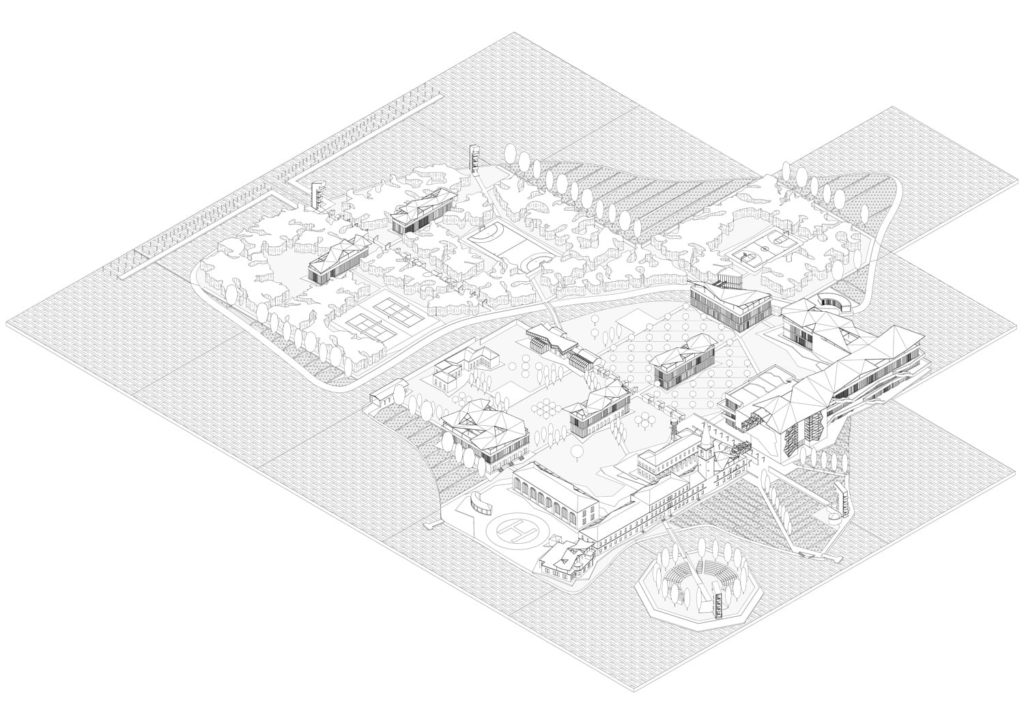
In our design choices two geometries are compared: the Cartesian’s, on the other hand, families of organic signs, more mineral than biomorphic. This theme, grasping the contemporaneity and presents throughout the history of architecture, it seemed to fit to the issue both of the scientific community, and of the site.
Collettivo PREtesti – Progetto: G. Carnevale, E. Giani, I. Peron, W. De Marchi, D. Scomparin, V. Covre, G. Parpajola.

